How much does it cost to develop a food delivery app?
Still, most of the food delivery market is getting dominated by big players. For e.g. in the US, the big players are Uber Eats and GrubHub, in Europe it is getting ruled by Glovo and Deliveroo, while in the Asian market Swiggy, Zomato, and FoodPanda are ruling. In this article, we will give you a complete estimation of developing a food delivery app and details of all aspects of it.
How to Develop a Food Delivery app?
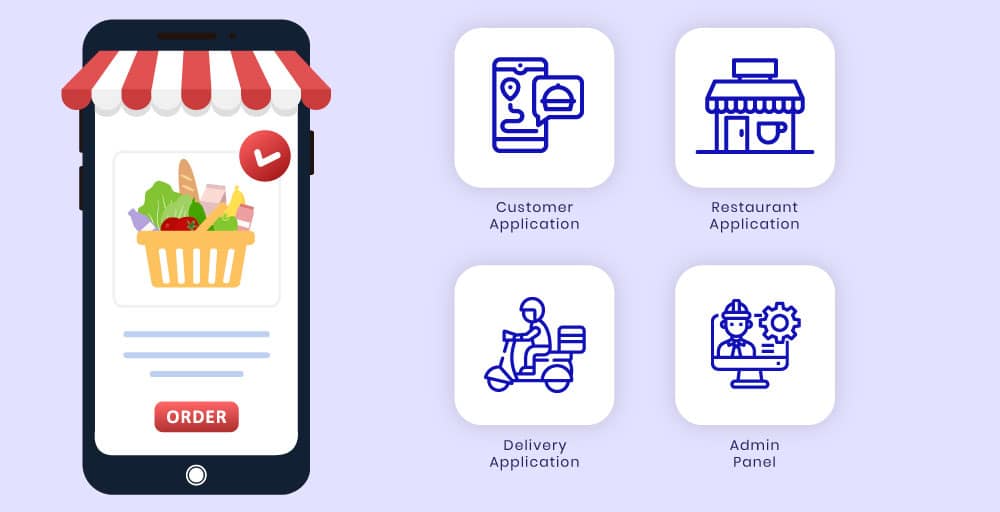
We will start from scratch. You are not just developing an ordinary app but a complete ecosystem in which many different entities are involved which should be tie together and have to perform their roles efficiently. While developing a Food delivery app, you have to develop for each entity. There are 4 major entities in a Food delivery application development. These are:
- Customer application: The customer would be able to make orders from nearby restaurants or hotels.
- Restaurant application: The restaurant owner would be able to accept orders made by customers and process them.
- Delivery app: The delivery boy will get notification of incoming orders. They have to pick up them from the restaurant and deliver to the address.
- Admin Panel: Like every other app, there would be an admin panel of the app by which the product owner and its team can manage all the processes.
The combination of all these 4 apps will make an ecosystem of food delivery application. Now let’s delve more about each of these apps.
Customer Application
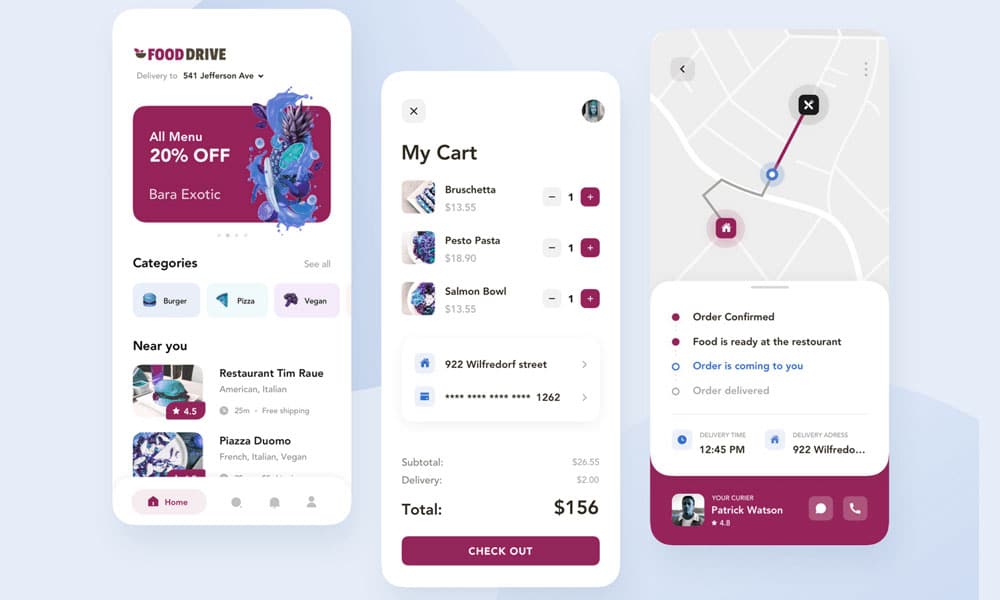
This is the most important aspect of your ecosystem as you are going to generate sales through the customers making orders on the customer app. The customer app should come with a highly captivating UI and interactive UX. There should be all required and advanced features & functionalities to give them a pleasant user experience.
Give primary focus to the search as users are mostly going to search their favourite restaurants or cuisines nearby their location. You can also suggest the best dishes available in the user nearby location. Let’s know all the essential features in more detail:
User Sign Up and Log in:
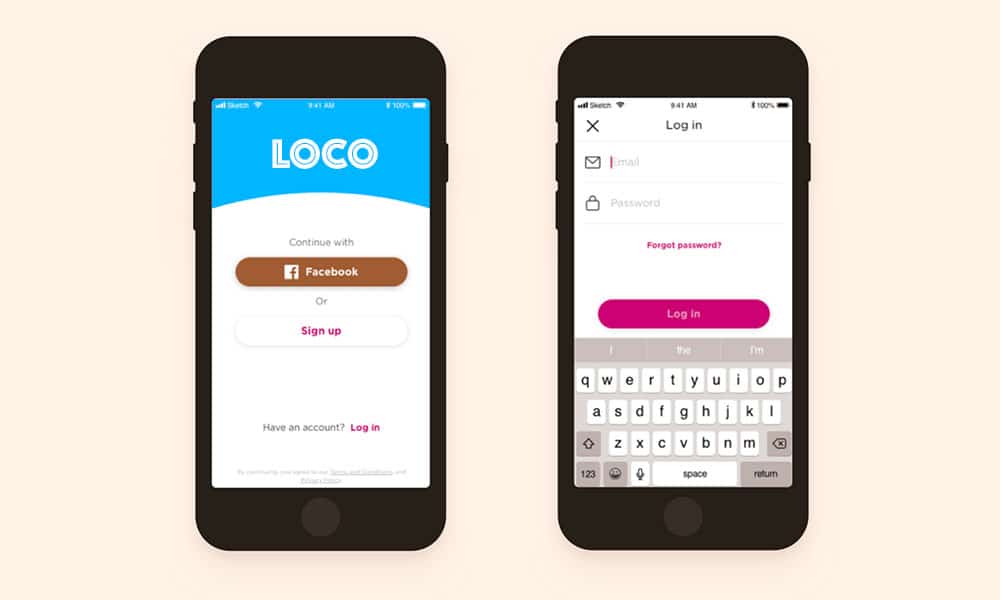
The customers should be onboard on your app with the only necessary information and in the blink of an eye. Don’t forget to ask their contact number and you can also implement social login. The number of customers registering on your app would be directly proportional to the number of login options you provide. You can give the option of password or login through OTP feature as well. For third parties, the most popular options are Google, Facebook, and Apple.
Searching Restaurants:
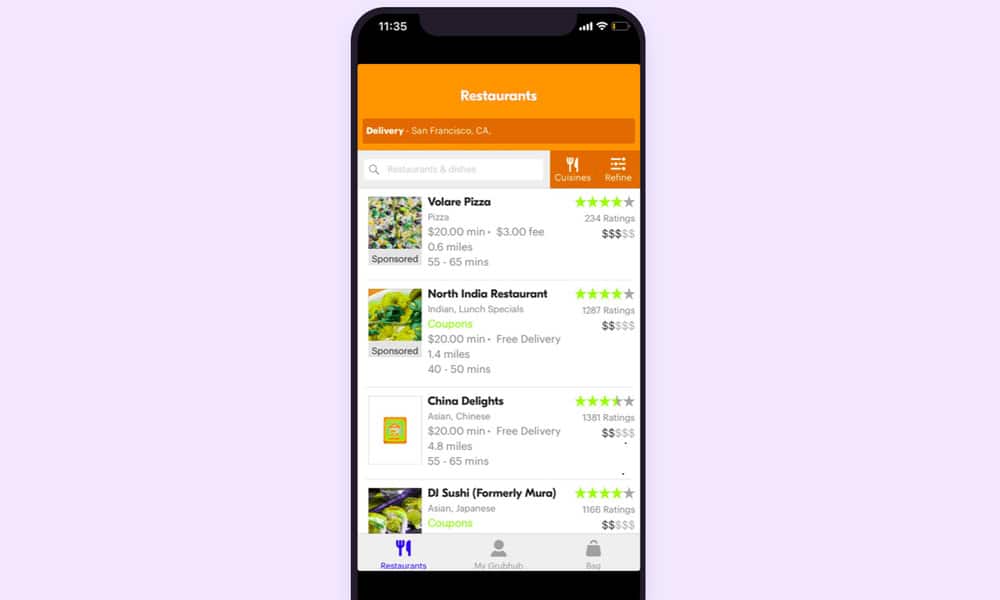
As mentioned above, the primary feature on the customer app is to search nearby restaurants. You can also implement certain filters like discounts, Veg or Non-veg, for a faster and user-friendly search. You can also display more information such as expected delivery time, reviews and ratings of restaurants, etc. to help customers before making an order. Take reference of GrubHub for the search feature.
Tracking Order:
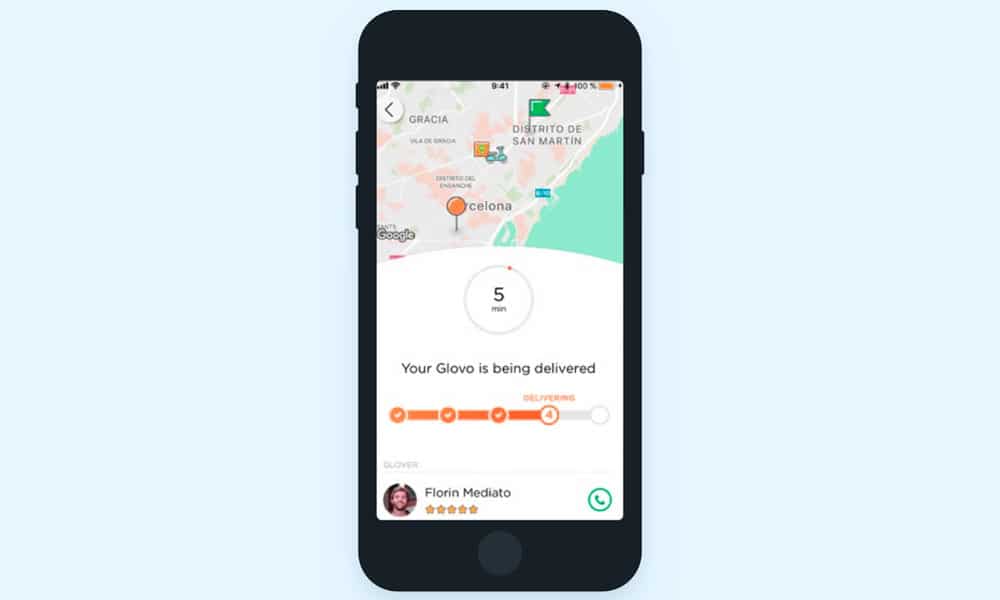
After ordering food it is not an easy thing to wait for it but tracking an order can be really helpful to control hunger. You need to provide each second status of the order to the customer such as food is getting prepared, the order has been picked up, and real-time order location using driver mobile GPS. Google Location API is best for Android app and Location Framework for iOS.
Payment and order placement:

Payment is the second most important thing in your app. The user should be able to make easy and fast payment without any hassle. A hungry person can’t wait to make order on your app so you should a very fast payment method. Integrating with digital wallets or UPI is also a very good option. You can also implement payment methods such as Paypal, Braintree or Stripe.
Paypal, Stripe or Braintree: Which payment method is best for your mobile application?
Push Notifications:
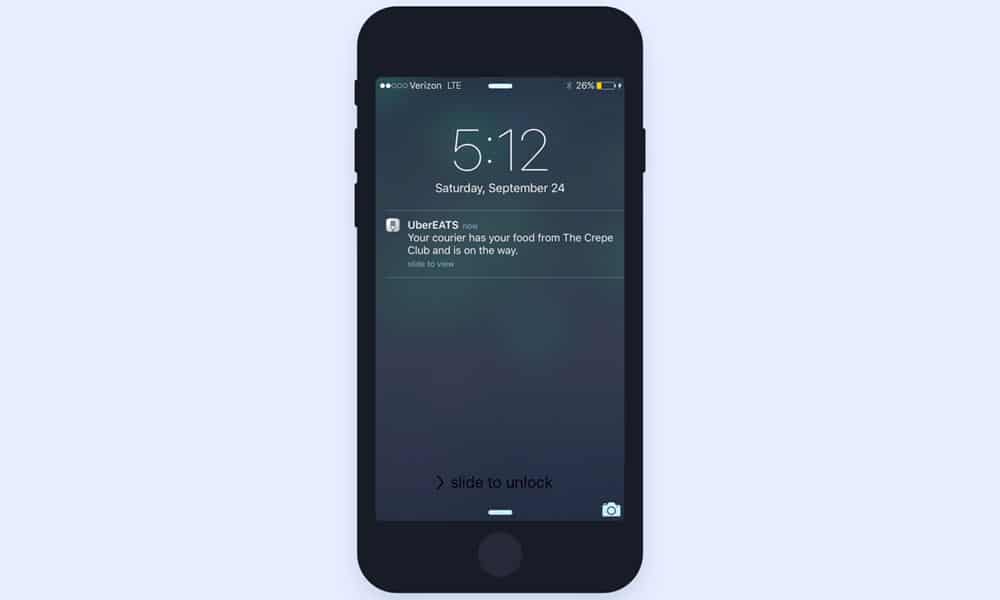
Push notifications will remind the users about every update of their order and are also helpful to promote your app. You can use them to give user updates about new offers, new restaurants, etc. If the user stops using your app then you may remind about delicious delicacies available in their location. This will increase the conversion rate of your app, and you app make good business. To implement Push Notifications you can use:
- Amazon SNS
- Apple Push Notification Service (APSN)
- Firebase Cloud Messaging
Reviews and Ratings:
Customer feedback is essential to better feed them and the growth of the business. Through feedback, you will get to know what is getting wrong and see the gaps in your customer service. The feedback is highly important when it is negative. The customer should be able to give feedback to the delivery boys as well as the restaurant. It would be great if the customers can give feedback to a particular dish, this will help other customers to know what is a USP of the restaurant.
Using Microsoft Azure, AWS or Digital Ocean.
Restaurant App
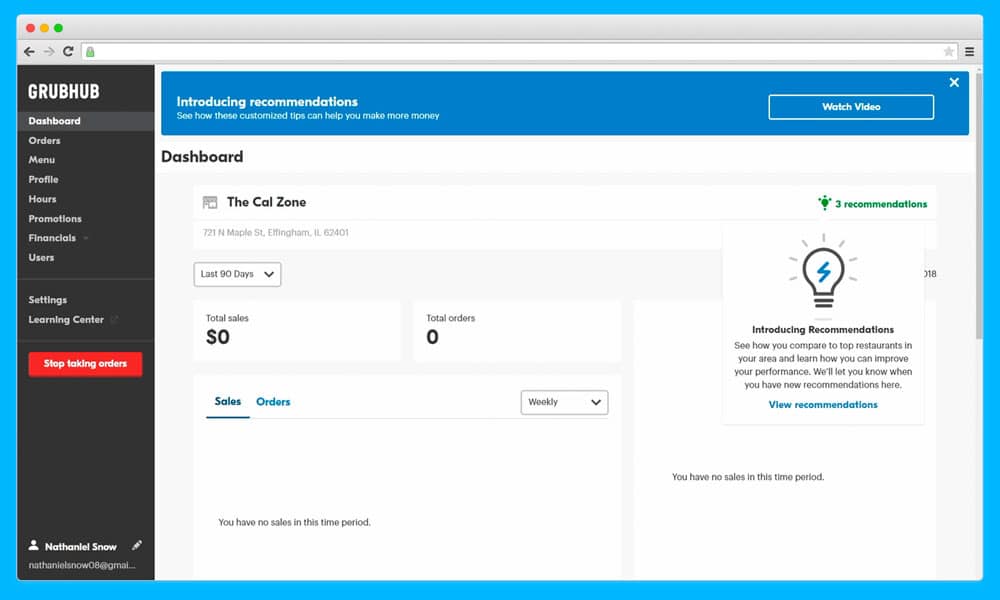
In the restaurant app, the major functionalities are accepting orders, getting notifications, and managing menus. You can either develop a web app or a native mobile application. The restaurant owners can use this app to check the incoming orders and providing those orders to the delivery boys while giving the status of it to the customer. The important features of a restaurant application are:
Restaurant owner Sign Up and Log in:
Just like the customers, the restaurants may not be necessarily tech-savvy and hence the sign-up and login process should be simple for them.
Managing Menus:
The restaurants’ owners should be able to manage the items of their menu. They can change the price and can also make the items out of stock if they aren’t available at the restaurant. The restaurants can also make combos of different dishes.
Managing Orders:
The restaurant owners should be able to check the incoming orders and process them properly. They would be able to also change the status of orders.
Ratings and Reviews:
The restaurant owners should be able to check their reviews and ratings made by the customers so that they can work on them and improve them.
Delivery Application
The delivery app should be simple so it can be easily used by the delivery boys without compromising the smoothness. To sustain an accurate and fast delivery on your app, deploy these features.
Delivery Boy Sign Up and Log in:
Just like the customer app, and restaurant app the delivery app sign up and login should be simple as well.
Navigation:
Navigation is highly important for the delivery boys as they have to find the routes to pick up orders and deliver them to the user address. The route should be the most optimized route taking account of traffic and distance. You can use Google Maps for the Android app and Location Framework for iOS.
Order details and status:
The delivery boy should also know the content of the order to avoid any chaos with the customer or restaurant. They will get the address of the customer along with their contact number. They will also update the status of the order.
Order History:
All the orders delivered by them would be saved in cloud-based systems like Azure, AWS or Digital Ocean.
Admin Panel
Admin Panel is the backend of your app by which you can manage all the business activities of your app. The admin features you need to incorporate in the app are:
Admin Login:
Even the Admin needs to login in the app with a username ID and Password so no else can Login in the system.
Restaurant Manager:
The admin would be able to add and remove the restaurants manually. For e.g., if a restaurant has poor ratings and constantly complains from the users he would be able to remove that restaurant.
Analytics:
Using analytics, the admin can also sort the restaurants on the basis of profit, average earning, etc. This will help the admin to know the business in more detail.
Payment Management:
The admin would be able to manage the payments to restaurants and delivery boys. They can reconsider the fees to delivery boys to encourage them.
Discounts and Coupon Manager:
You can also manage the discounts on a certain time period. So that the users will make more orders and will increase customer acquisition.
Let’s Summarize it
Here are the summarized features of each app of the Food delivery ecosystem:
| App | Features |
|---|---|
| Customer App | Customer Sign Up and Log inSearchingTrackingPlacing Order and PaymentPush NotificationsReviews and Ratings |
| Restaurant App | Restaurant owner Sign Up and LoginManaging MenusManaging OrdersReviews and Ratings |
| Delivery Boy App | Delivery Boy Sign Up and LoginNavigationOrder detail and statusOrder history |
| Admin Panel | LoginManaging restaurantsAnalyticsPayment managementDiscount and coupon management |
So these were the features you need to include in your food delivery applications.
On-Demand App Development: How businesses are leveraging custom solutions?
How much will it cost?
After deciding the features, you will definitely want to inquire about the costs of developing a food delivery application. The development cost depends upon the time of developing it which in turn depends upon the features and functionalities you want to implement. Our hourly cost is $25/hr which is quite less than the other countries.
Cost Estimation
| Type | Hours | Cost |
|---|---|---|
| User app (Both iOS & Android) | 1000 hrs | $25,000 |
| Delivery app (Both iOS & Android) | 850 hrs | $21,250 |
| Restaurant app (Web-Based) | 180 hours | $4,500 |
| Admin Panel (Web Based) | 250 hours | $6,250 |
| Total | 2280 hours | $57,000 |
How can you make money through a food delivery app?
After the development of the food delivery app, the first thing will come in your mind to generate money. There are many different ways by which you would be able to make money through food delivery app. You can implement advertisements, promote certain restaurants etc.
Restaurant Fees or Commission
You can charge the restaurants a certain amount of fees or take a commission from their sales. For examples, Swiggy charge 15% commission from their restaurants.
User Fee
It means that users have to pay some additional amount for getting their order delivered right at their address. The charges can be fixed as well as floating. You can charge the customers fees on the basis of distance or a fixed price.
You can also increase the fee during surge time for e.g. at lunch, or evening snacks.
Why to choose Amplework Software?
At Amplework Software, the best mobile application development company, we are having expert developers who are proficient in developing on-demand apps and food delivery apps. Whether it is an android app, iOS or web-based application, we are having expertise in all. Let us know your requirements and we will help you with every prospect of it.



 sales@amplework.com
sales@amplework.com
 (+91) 9636-962-228
(+91) 9636-962-228





